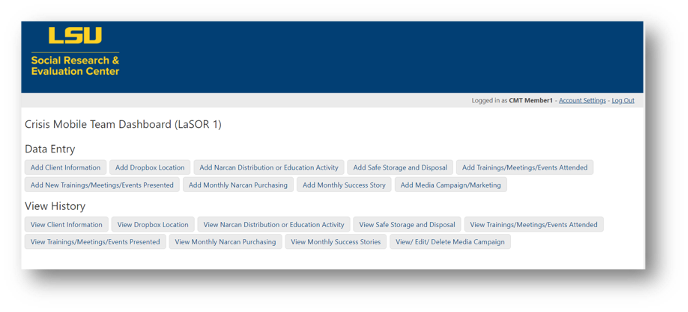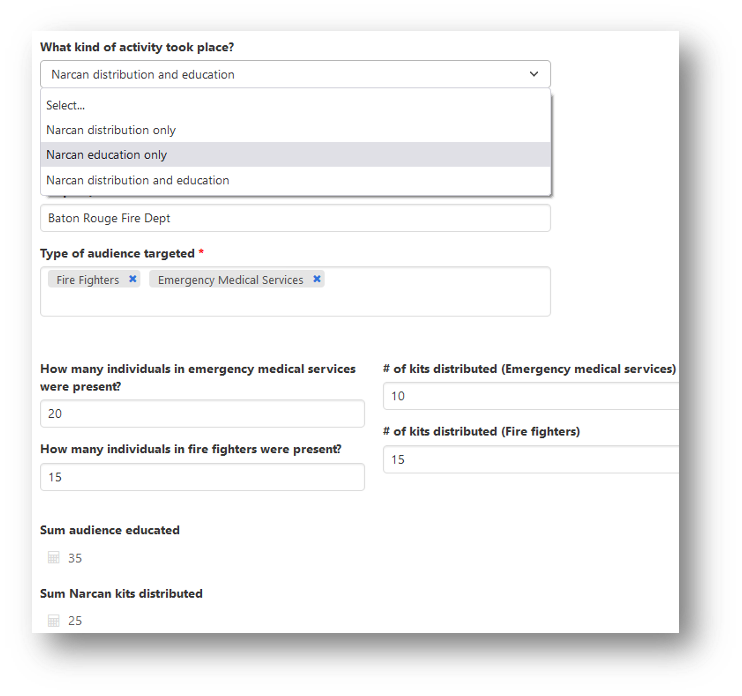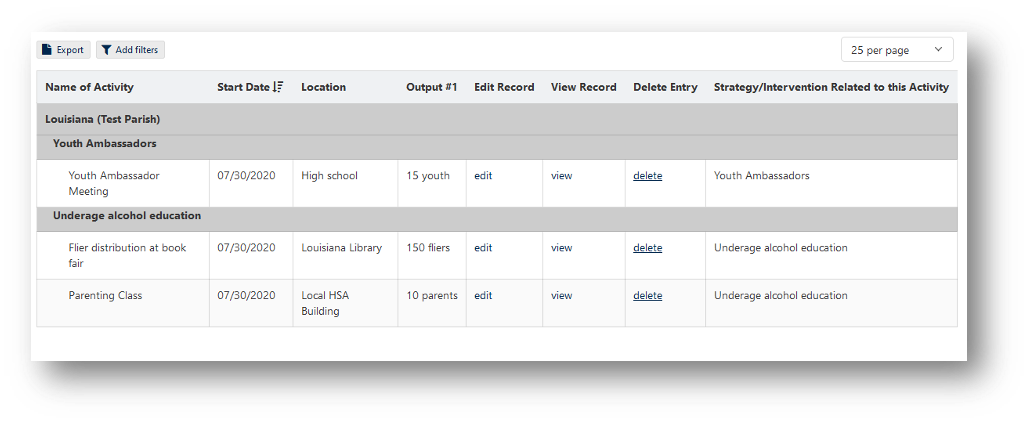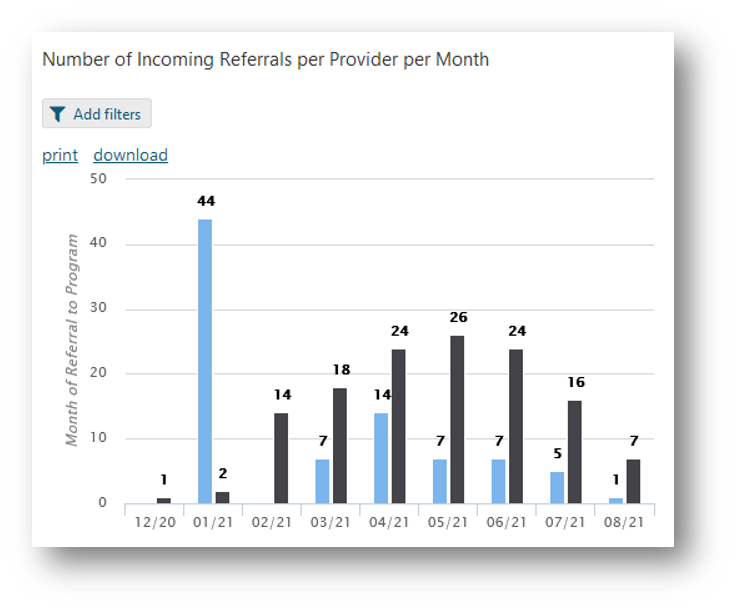
Greetings everyone. We are Kristina Little and Sam Robison from the Louisiana State University Social Research and Evaluation Center (SREC). In pursuit of our mission to foster healthy social systems, the SREC team undertakes a wide array of activities (e.g., program development, program evaluation, research) requiring data collection and reporting.

Our work largely takes place in real world settings where there are barriers to consistent, complete, and valid data collection efforts. While paper forms, spreadsheets, and online survey websites all have their uses, each has drawbacks including limits on data validation/uniformity, flexibility, and post-submission data access by users. When it comes to data reporting and resolving data-related errors, Excel-based pivot tables and statistical software such as Stata and R can be powerful tools. However, providing accurate, real-time data and communications surrounding those data can be very resource intensive.
In the behavioral health world, we have worked on several projects where we were tasked with collecting and reporting out GPRA client surveys and IPP indicators. After slogging through this for years, making only slow and modest improvements, we sought out alternatives to the traditional way of doing things. One solution we found and have been using for a couple of years is Knack. Knack is essentially a web-based relational database (like Microsoft Access) but is relatively user friendly both on the back-end of database development (for “builders”), and on the front-end of access and use by data entry staff. In this system, you develop an “app” for each project. Each app has both data tables (objects) that can be related to each other in various ways, and forms (pages) that dictate how fields from objects are displayed to users. In each app you can have several forms and even different constellations of forms depending on user privileges (e.g., site manager, data entry staff). Data validation and display logic can be built into forms, and e-mails can be automatically sent out to either users or builders depending on form criteria.
Here is the home page for an app built for an opioid treatment and prevention grant. Each “button” is a link that leads to a separate data entry form.

Here is a screenshot of a form for providers to document Narcan distribution and education. In this form, multiple selections can be chosen from the “Type of audience targeted” field, triggering new fields to appear asking for relevant follow-up information (in this case, numbers of individuals present and Narcan kits distributed). The sums of “individuals educated” and “Narcan kits distributed” are automatically calculated as the user enters data.

Additionally, you can build in reports that can be viewable and filtered by front-end users. Raw data could be displayed here, as can summary data in the form of pivot tables or graphs. This functionality differentiates Knack from, say, Qualtrics, where users can typically only access data after it is manually exported and queried. This cuts down on the time and resources needed to run reports manually, while also allowing for real-time data access for program staff entering the data, the grant supervisors, and evaluation staff.
Here is a table from a form that displays data connected to a given user site. From such a table, data entry users can potentially filter, export, view additional details, edit, or delete the data they send to data collection staff.

Here is a visual summarization of monthly referrals from two program sites, based on information initially submitted through a form in Knack. Options to print or download tables and graphs can also be used in this system

The American Evaluation Association is celebrating Behavioral Health (BH) TIG Week with our colleagues in Behavioral Health Topical Interest Group. The contributions all this week to aea365 come from our BH TIGmembers. Do you have questions, concerns, kudos, or content to extend this aea365 contribution? Please add them in the comments section for this post on the aea365 webpage so that we may enrich our community of practice. Would you like to submit an aea365 Tip? Please send a note of interest to aea365@eval.org. aea365 is sponsored by the American Evaluation Association and provides a Tip-a-Day by and for evaluators. The views and opinions expressed on the AEA365 blog are solely those of the original authors and other contributors. These views and opinions do not necessarily represent those of the American Evaluation Association, and/or any/all contributors to this site.

Ms. Little and Mr. Robison,
I appreciated reading your post regarding a tool that can enhance data collection and reporting. The process of data collection seems very tedious, yet very important as it must be precise and detailed. What your article brought to the forefront of issues and dilemmas in evaluation was the need for efficiency in data collection.
As I am completing my first program evaluation design in a Master’s of Education program with Queen’s University in Ontario, I have been amazed at the amount of data that is conjured up throughout each step for use and evaluation. Being organized to verify and evaluate all of the data is pivotal to successful findings. Your mention of a web-based relational database called “Knack” was intriguing as it would make sense to transfer all data into a digital format. This would allow for an efficient way of accessing the data, easily categorizing the findings, and locating any information needed by category. In addition, by being able to create multiple forms and reports with the accumulated data, it would aid in organizing the information and make it simple to filter through all of the raw data to find particular information.
Once again, thank you for sharing this information as I am sure this is a constant dilemma that required tedious hours to properly organize the data gathered. Perhaps, using more digital tools for questionnaires and other methods of data collection would even alleviate the steps of gathering and organizing the information.
Best regards,
Kristin